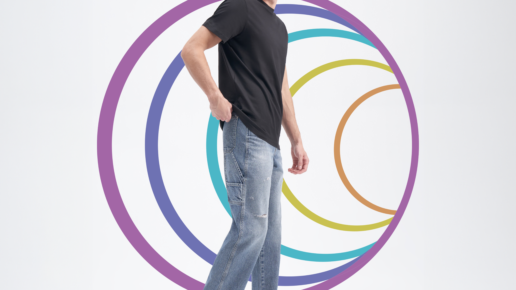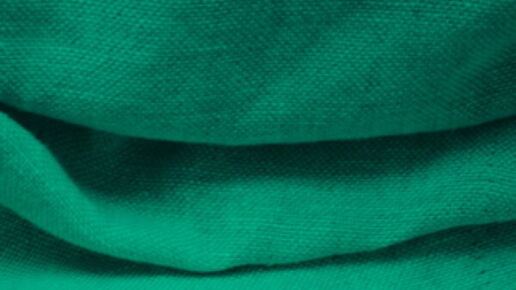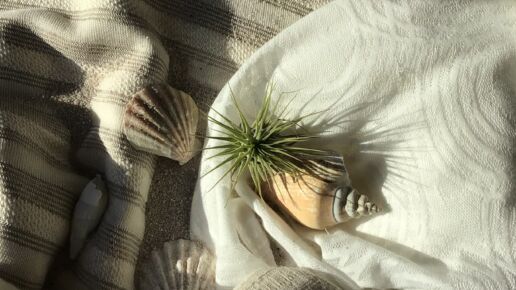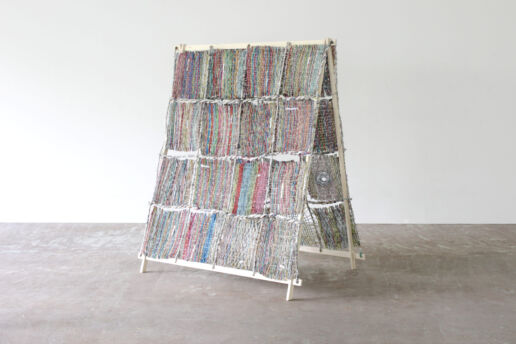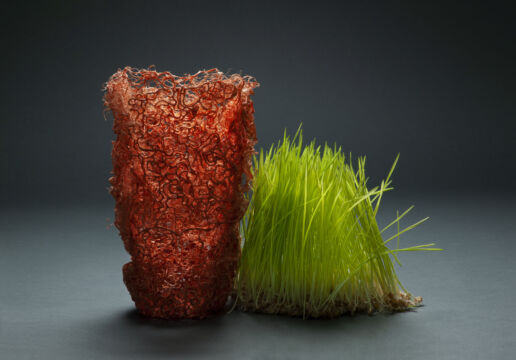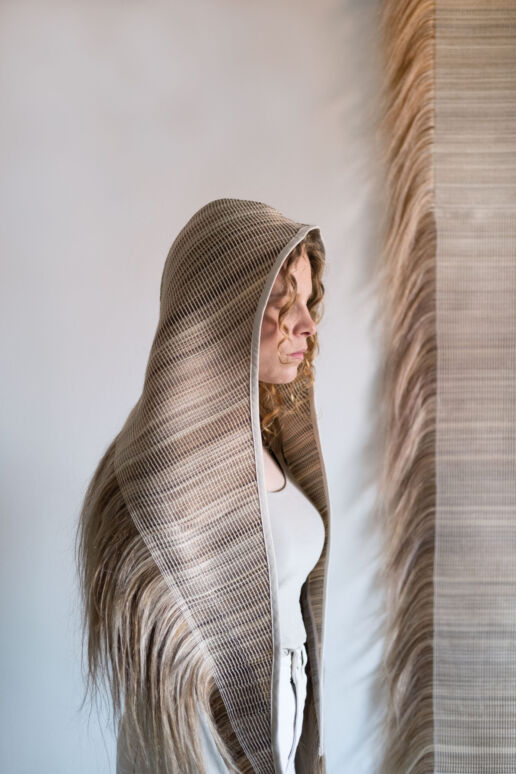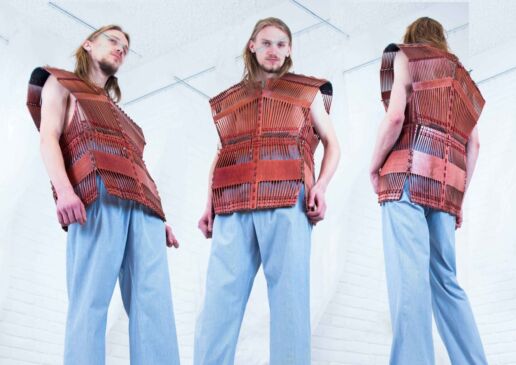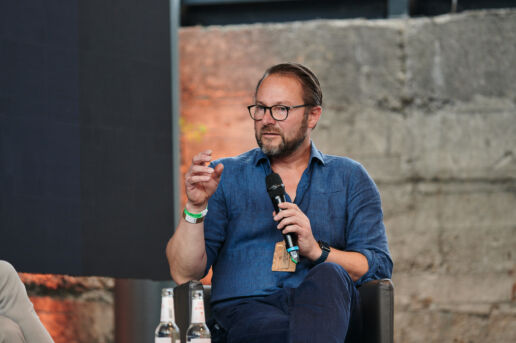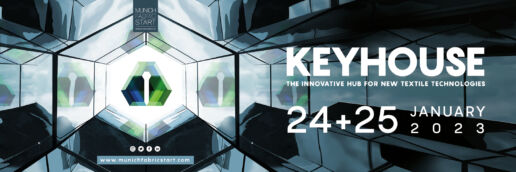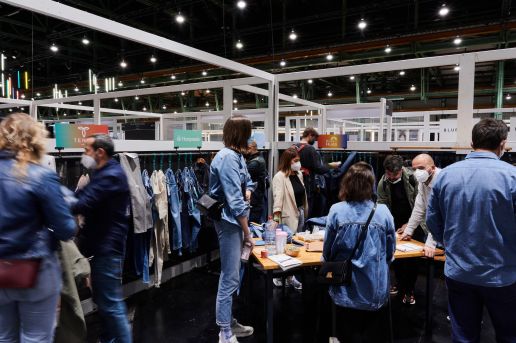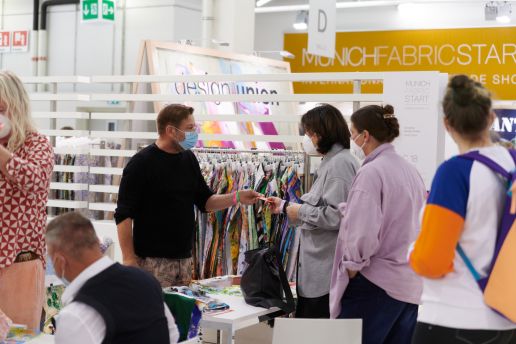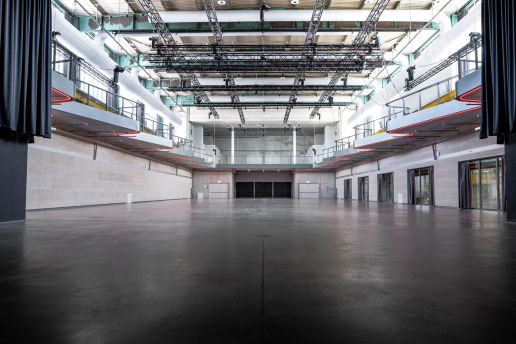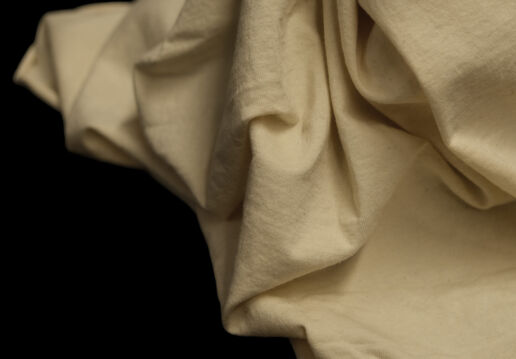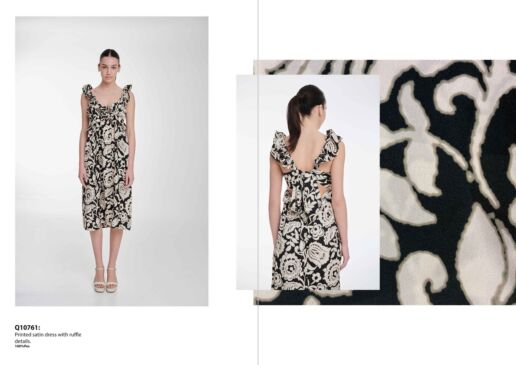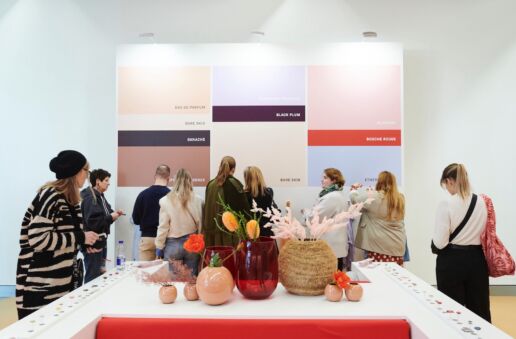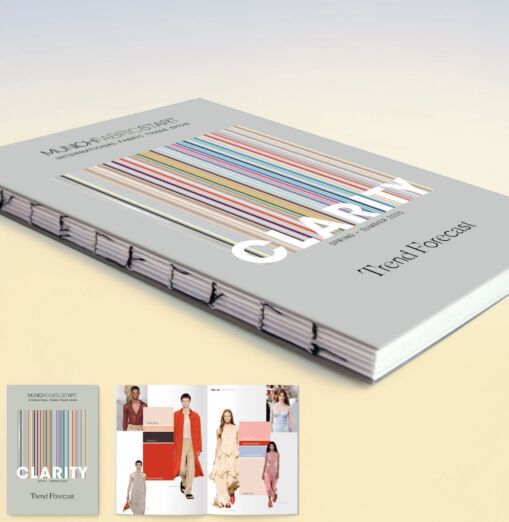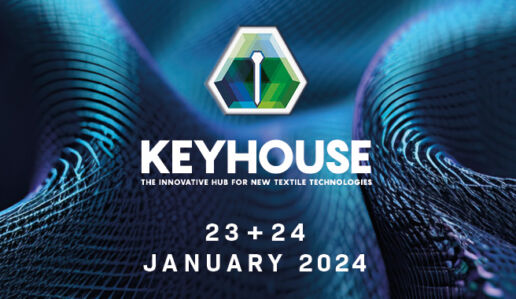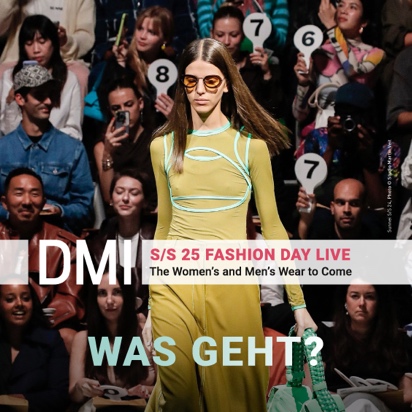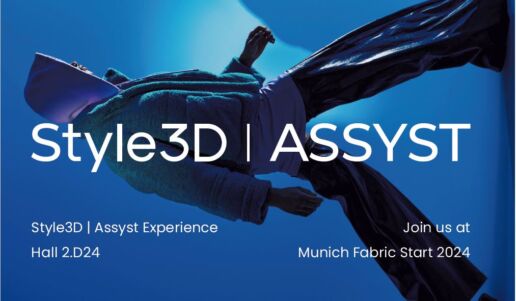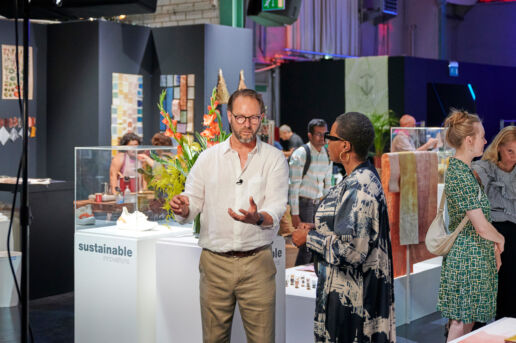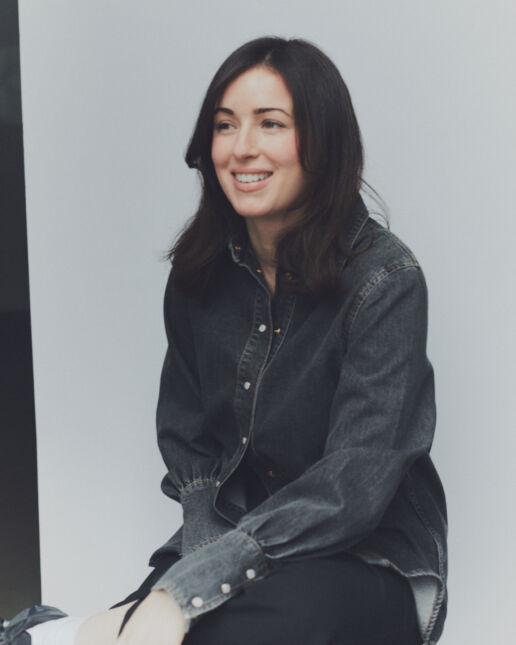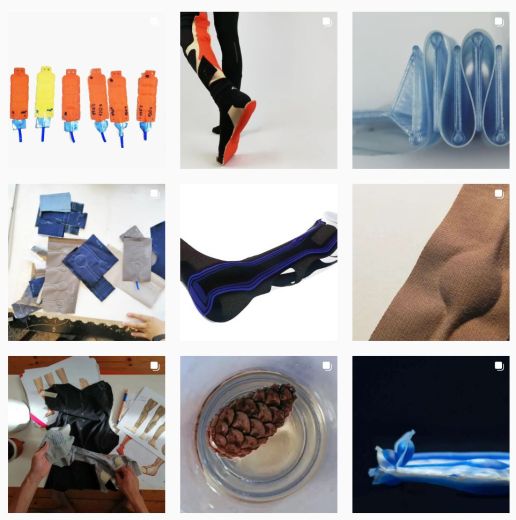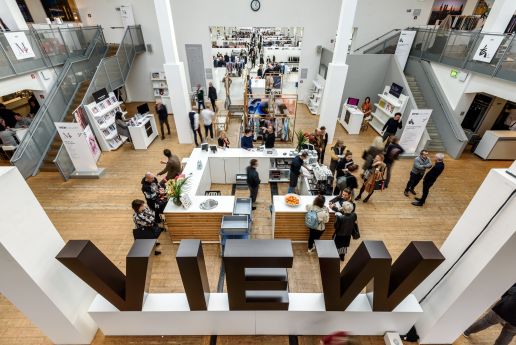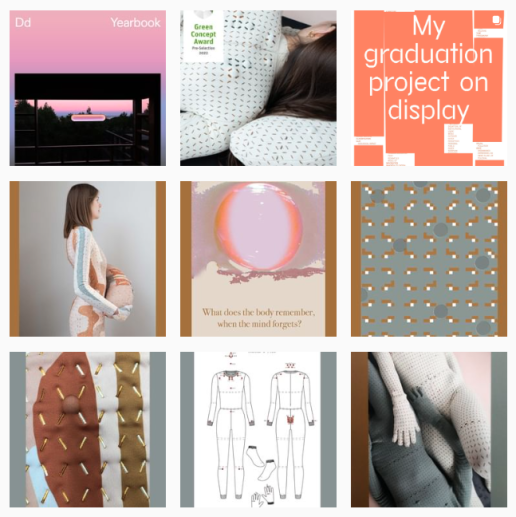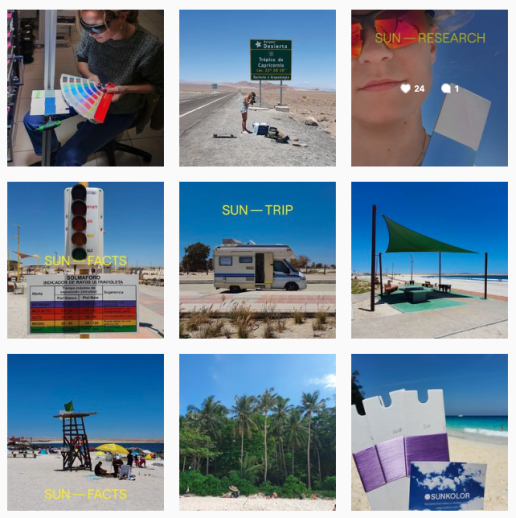Sustainable Innovations
The New World of Colours - Sustainable innovations
THE NEW WORLD OF colours
MycoColors by Birke Weber and Friederike Hoberg
SUSTAINABLE INNOVATIONS
Dyes play a major role in our daily lives – in the clothes we wear, the cosmetics we use or the food we eat. Most of the dyes we use are of synthetic origin, which poses potential health risks – both in the manufacturing process and in the dyeing process or use. In addition, dyes and pigments in industrial wastewater are not infrequently released into the environment, where they remain and damage ecosystems.
MycoColors, a project by designer Birke Weber and biochemist Friederike Hoberg, addresses precisely this problem. The two are researching the potential of alternative dyes – specifically: from fungi. With MycoColors, they want to develop optimal growth conditions for colour-producing mycelium with the aim of creating a sustainable extraction of dyes and an innovative dyeing process and establishing fungal dyes in the textile and fashion industry. Because: fungi offer a lively, broad colour spectrum that runs through all the colours of the rainbow and is far from being exhausted
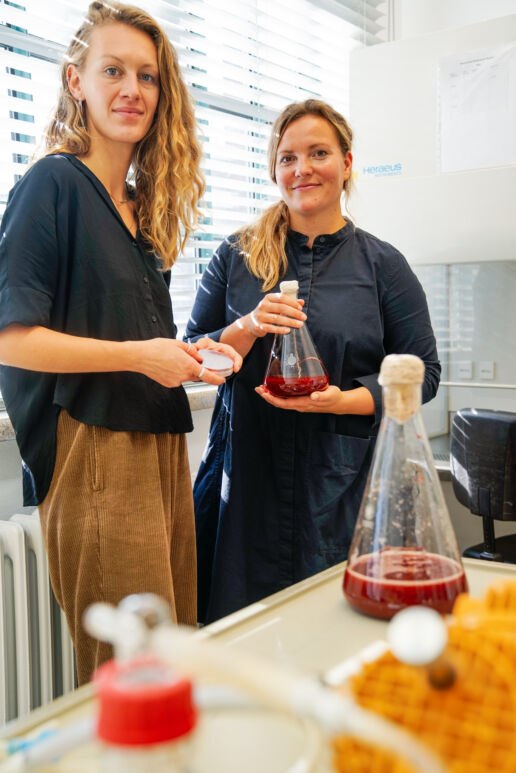

The advantages: The fungal mycelium from which the dyes are extracted grows within just a few days, cultivation takes place in inexpensive culture mediums and production is independent of weather and season. Furthermore, MycoColors works in a closed material cycle: resources such as water and nutrients can be recovered and reused, and by-products such as the biodegradable mycelium can either be returned to nature or upcycled – for example, by using it for paper production.
“The textile and fashion industry uses vast quantities of toxic and carcinogenic chemicals, including synthetic dyes, for its ever-changing
product range. But the end customers cannot trace everything that is hidden in a purchased T-shirt or carpet. A humane and environmentally
friendly alternative made from fungi aims to revise this uncertainty, especially with regard to the colors in a purchased product.”
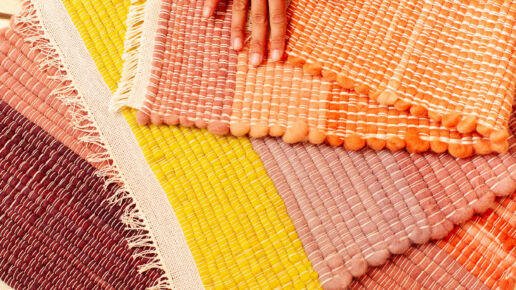
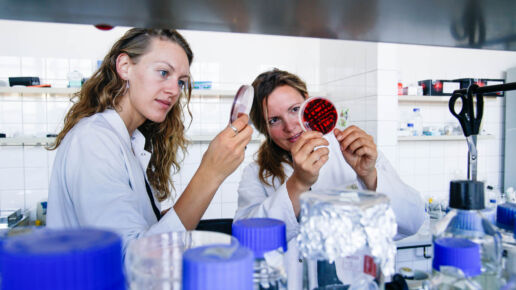
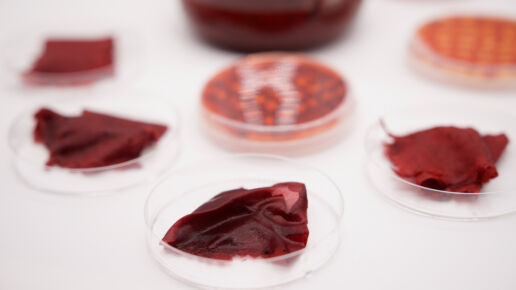
———————————————————————–
THIS MIGHT BE ALSO INTERESTING FOR YOU
BLUEZONE Signature Spring.Summer 25 – Part II
4. April 2024
The designer has given free rein to his creativity to develop his vision of high quality, making increased use of ISKO's Ctrl+Z material science.
BioBase – Sustainable innovations
2. April 2024
The project targets the establishment of biobased polymers in the textile industry, demonstrating their full potential.
Fabric Trends Spring.Summer 25 – Part IV
28. March 2024
Summer, sun, well-being: Cooling materials such as cotton, linen, hemp is wanted as plain or combined qualities.
Collective braiding - Sustainable innovations
A world where everything is becoming faster, more connected and more digital, endless possibilities are emerging. But why always strive for the new instead of continuing the traditional?
Designer Camille Champion has taken note of this development and, during a stay in South Korea, set out to revive interest in traditional craftsmanship.
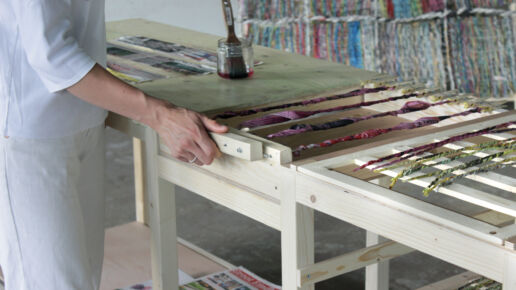
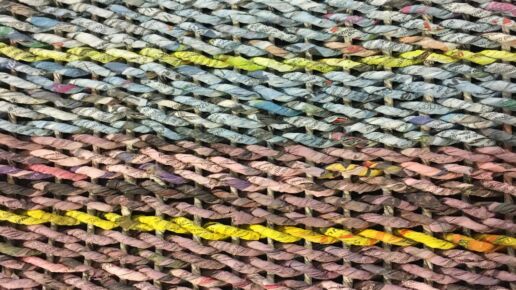
During her travels, she discovered the over 500-year-old technique of jiseung – a process dating back to the Joseon Dynasty that is used to make basketry from old books and paper waste. To do this, the paper is cut into thin strips and then corded. The cords can then be woven into containers such as baskets in various colours and patterns using different basketry techniques.
To save this cultural heritage from extinction, Camille Champion has launched the “Twist and Roll” project, bringing the reuse of newspaper waste to create new objects into a modern Western context: to pass on the craft, the designer has set up a series of workshops to give school children a connection to this tradition. She has designed a small weaving tutorial to teach children to make their own paper threads, weave them on a loom and then collectively build a tent-like structure for their classroom. Twist and Roll combines sustainability, creativity, craft skills and teamwork to show how the education system can benefit from crafts.
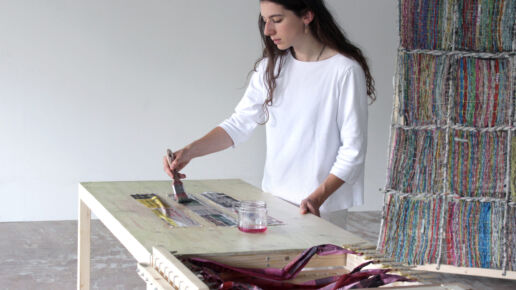
“In my opinion, giving the right tools to the new generations is very important.
Teaching them about materiality, history, or sustainability, will allow them to make the right choices for a better future.”
———————————————————————–
THIS MIGTH BE ALSO INTERESTING FOR YOU
BLUEZONE Signature Spring.Summer 25 – Part II
4. April 2024
The designer has given free rein to his creativity to develop his vision of high quality, making increased use of ISKO's Ctrl+Z material science.
BioBase – Sustainable innovations
2. April 2024
The project targets the establishment of biobased polymers in the textile industry, demonstrating their full potential.
Fabric Trends Spring.Summer 25 – Part IV
28. March 2024
Summer, sun, well-being: Cooling materials such as cotton, linen, hemp is wanted as plain or combined qualities.
Clothes that grow - Sustainable innovations
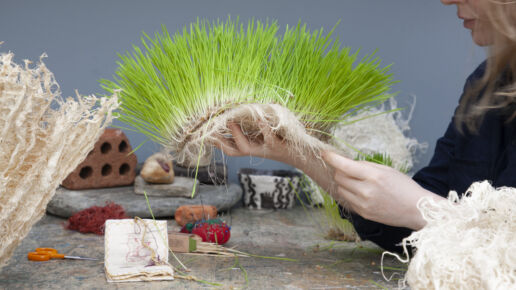
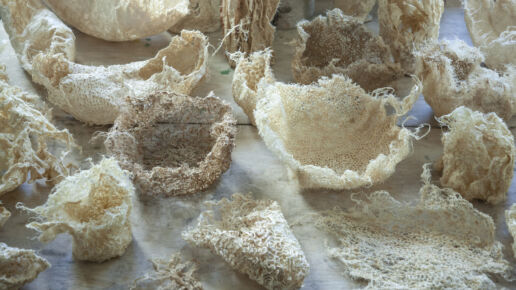
Nature as a 3D printer: material designer and underwater photographer Zena Holloway creates shapes and forms from wheat grass roots that grow in self-carved moulds made of beeswax. The supposed magic lasts for twelve days – the roots spread out horizontally or vertically and make their individual way through the wax templates. Depending on the shape of these, the roots either grow small in a confined space so that they become flat and compact, or if there is more space they can root deeper and three-dimensional shapes emerge. Immediately after harvesting, the roots are heavy and moist, after 24 hours they dry out and become light as a feather.
Each growth cycle produces a different result – all products are therefore individual pieces that can be further shaped by cutting, sewing, tearing or linking. For example, they can be used to create large, hanging structures, to shape vessels or to produce clothing and accessories. The wheatgrass roots also react particularly well to natural dyeing processes. In the name of sustainability: the water that accumulates and runs off during production can be reused and the leftover shoots, seeds or roots can be reused as animal feed. In addition, the dried root is a kind of botanical skeleton that binds carbon. Thus, the Rootful project demonstrates a micro-level approach to solving the complex problem of climate change.
“Growing artefacts from root is the simplest concept but captures the imagination of a wide audience.
I’m learning that root is a wonderful material to create fashion and art, serving to open up conversations around materiality and sustainability that inspire change.“
In the name of sustainability: the water that accumulates and runs off during production can be reused and the leftover shoots, seeds or roots can be reused as animal feed. In addition, the dried root is a kind of botanical skeleton that binds carbon.
Thus, the Rootful project demonstrates a micro-level approach to solving the complex problem of climate change.
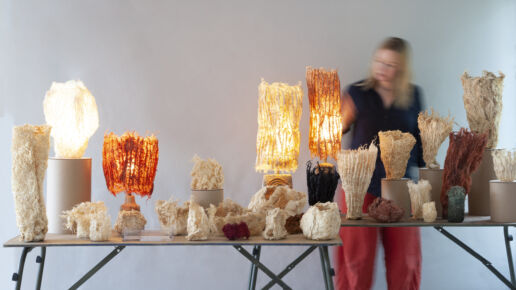
———————————————————————–
THAT MIGHT BE ALSO INTERESTING FOR YOU
BLUEZONE Signature Spring.Summer 25 – Part II
4. April 2024
The designer has given free rein to his creativity to develop his vision of high quality, making increased use of ISKO's Ctrl+Z material science.
BioBase – Sustainable innovations
2. April 2024
The project targets the establishment of biobased polymers in the textile industry, demonstrating their full potential.
Fabric Trends Spring.Summer 25 – Part IV
28. March 2024
Summer, sun, well-being: Cooling materials such as cotton, linen, hemp is wanted as plain or combined qualities.
Hairy affair - Sustainable Innovation
Hair creates identity – we dye it, style it, create new looks and expressions, and associate ourselves with cultural or social groups. It loses meaning and becomes rubbish to be discarded. In her hair project, Savine School gives hair a second life.
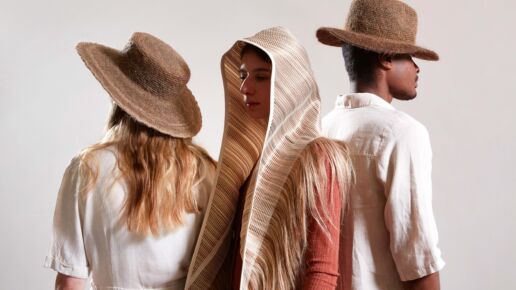
“Haar Haar focuses on the short switch from appreciating hair to feeling disgusted by it, even when it is the same material. It seeks to give a second life
to the material we treasured when it was on our head.“
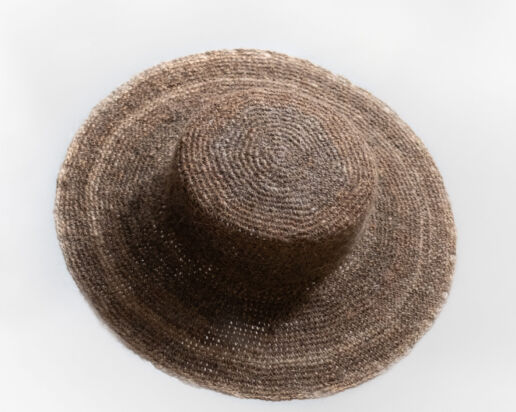
Every month, the textile designer and material researcher collects kilos of hair from various hair salons and extension studios and sorts them by colour and length. In the next step, she uses a machine to spin the hair together with wool into a uniform, flexible yarn. This yarn highlights the properties of both materials: the admixed wool offers the possibility to work with other tones beyond the hair colours, while the reflection of light on the hair provides a beautiful shimmer.
The designer uses the yarn to produce stylish accessories, such as crocheted hats – which at first glance have nothing to do with what ends up on the floor during a visit to the hairdresser. In this way, Savine Schoorl makes it clear that hair is a valuable resource and gives people the opportunity to discover the value of supposed waste in its second life cycle.
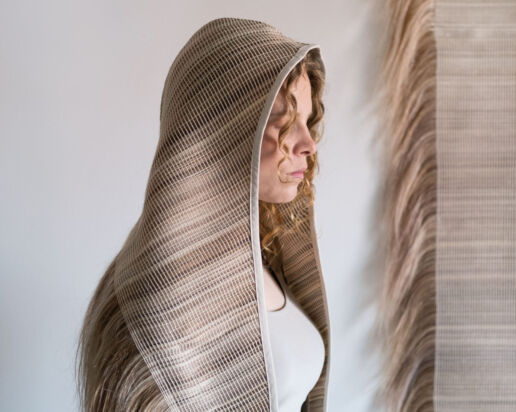
———————————————————————–
THIS MIGHT BE ALSO INTERESTING FOR YOU:
BLUEZONE Signature Spring.Summer 25 – Part II
4. April 2024
The designer has given free rein to his creativity to develop his vision of high quality, making increased use of ISKO's Ctrl+Z material science.
BioBase – Sustainable innovations
2. April 2024
The project targets the establishment of biobased polymers in the textile industry, demonstrating their full potential.
Fabric Trends Spring.Summer 25 – Part IV
28. March 2024
Summer, sun, well-being: Cooling materials such as cotton, linen, hemp is wanted as plain or combined qualities.
A Suit of Armour - Sustainable innovations
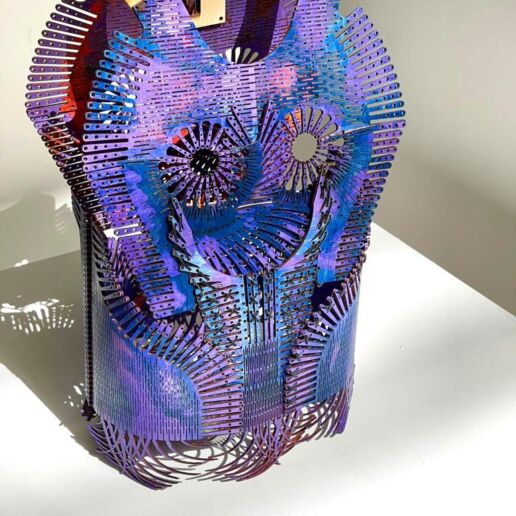
The name says it all: “Choub” means “wood” in Farsi – the material that designer Mehdi Mashayekhi draws on in his project Choub and uses innovative methods to create something new: Using digital fabrication, he has designed an abstract clothing collection for which he deconstructs the wood, giving the material new physical properties such as flexibility and stretchability.
The designer resorts to two methods: with topology optimisation, a computer-based process, he uses algorithmic models to determine the optimal shape of components in terms of load limits. The generative design method also creates new, powerful design options with the help of artificial intelligence. In this way, Mehdi Mashayekhi succeeds in solving complex requirements, distributing the weight of components and reducing manufacturing costs.
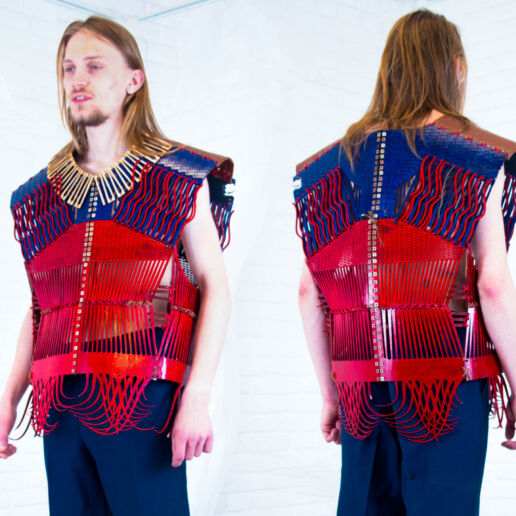
“Design is a glowing point in the cross-point between art and science, where reality meets vision.”
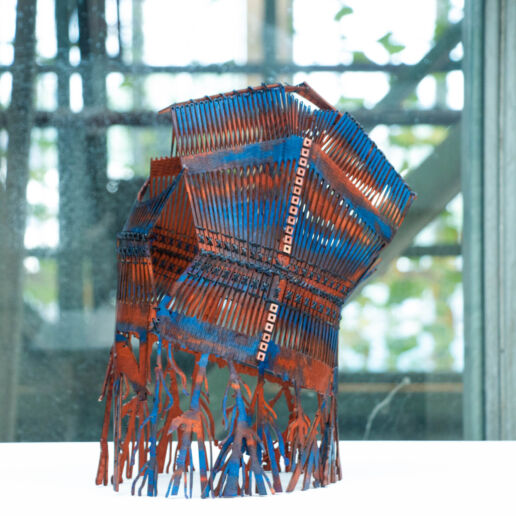
Innovative, unconventional, visionary: In the Choub project, 6mm thick plywood is used to create armour-like, portable constructions in which the wood loses its hardness and becomes flexible. Win-win: The designer optimises the use of materials in the design and at the same time provides a solution for upcycling waste. With the use of digital manufacturing, Mehdi Mashayekhi is helping to drive circularity and strengthen openness to materials and technical textiles.
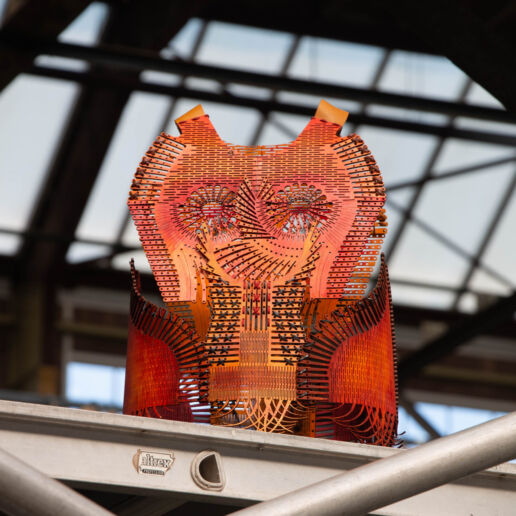
———————————————————————–
THIS MIGHT BE ALSO INTERESTING FOR YOU
BLUEZONE Signature Spring.Summer 25 – Part II
4. April 2024
The designer has given free rein to his creativity to develop his vision of high quality, making increased use of ISKO's Ctrl+Z material science.
BioBase – Sustainable innovations
2. April 2024
The project targets the establishment of biobased polymers in the textile industry, demonstrating their full potential.
Fabric Trends Spring.Summer 25 – Part IV
28. March 2024
Summer, sun, well-being: Cooling materials such as cotton, linen, hemp is wanted as plain or combined qualities.
"How do our actions contribute to the better?"
What is currently happening in the industry of innovators, transformers and forwardthinkers?
Different developments can be observed – especially when it comes to upcoming designers and creators, which is very interesting yet inspiring. Newcomers are about either entering the industry or creating their own one; furthermore, they all developed a very high professionalism in everything they do and how they present their ideas. Storytelling matters, that’s why we see crafts that concern and that communicate about thoughts, materials and backgrounds. They somehow reflect on the state of the industry and/or they question current systems. Just with the eye on possibilities, not to add critique. It is a friendly way to inspire.
You just said creators are “entering the industry or creating their own one”. What do you mean by that?
Well, actually right as I say. Either people and ideas enter an industry OR they create an industry. Entering means that designers or creators just fit into an industry and can get part of it or they can develop their own techniques and make it scalable and somehow create their own. Let me give you an example: WINT Design Lab discovered a new material and also discovered how to use it in order to make it relevant for the market. Either they can enter the industry OR if they find possibilities to cover all the needs within the supply chain and develop the machines to produce in a big scale, they could go big and just create their own industry.
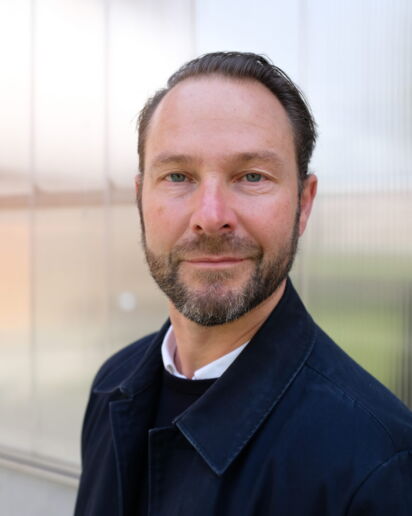
Simon Angel
What other developments can you identify?
Back in the days, let’s say about five years ago, there was mainly one person behind a new idea that was working within a tiny studio. Compared to that, everything is so much more professional: being a material designer, you can have a studio and work with employees who assist. That is nowadays how designers get ready to present their idea to the market. You need people who bridge the gap between the studio and the market. I personally recognize a huge potential in this point of professionalism, because people get ready to connect – young designers now offer representative samples and get in touch with the industry on a very professional level. Newcomers inspire the industry.

What sounds very interesting. What do the newcomers do differently?
Things that impress the industry: crafts that concern and communicate. The designers and their innovations want to tell us stories: it’s about the material, systems (and old behaviours) but also the designs. We can get glimpses into cultural backgrounds, different techniques, social aspects and so much more. For example, the project “Rootful” by Zena Holloway and the project “Choub” by Mehdi Mashayekhi show off how to create a material out of seagrass or wood with the implemented idea to use the finished garment or the designs as tools to communicate.
That’s a positive development, isn’t it?
Yes, it is. But one thing should not be forgotten: we are in the middle of a delicate discussion on the urgency of creating, within that everybody has to
put their own position into a fresh perspective. I sometimes find it important to take a bit of a distance and ask rhetorically questions like: So what? We are
leaving the era of RE-thinking we are entering an era of PRE-thinking. We can challenge ourselves in critical self-reflection with a future smile.
We should not design just to be a designer or cook just for the sake of being a chef. We should not create just to be a creator. We should not just buy new stuff, only for the sake of being a consumer. Way more, we should cook when people need food, design when designs are not good enough and create when the world needs a new product. Let’s stay critical and ask ourselves over and over again: how do our actions contribute to the better?
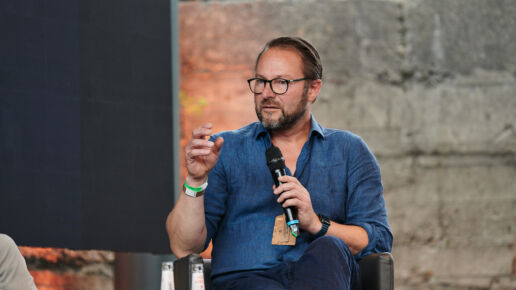
EXPOLRE AND GET INSPIRTED AT MUNICH FABRIC START
IN THE SUSTAINABLE INNOVATIONS AREA AT KEYHOUSE – H5!
Discover more industry-changing innovations at our upcoming trade shows:
Meet Saitex - the vertical Vietnamese Denim Entity
Global jeans manufacturer Saitex is going vertical as it officially announces the opening of its first denim fabric making mill in Vietnam. The new 100,000 square meter facility is located 40 minutes from its cut & sew factory near Ho Chi Minh City where 18,000 pairs of jeans are made on average per day.
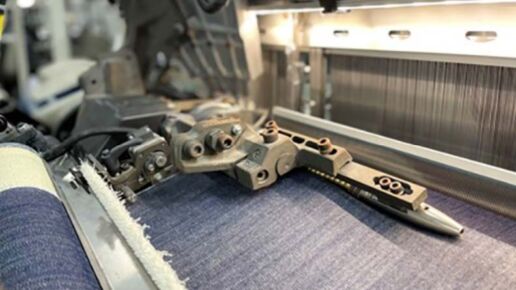
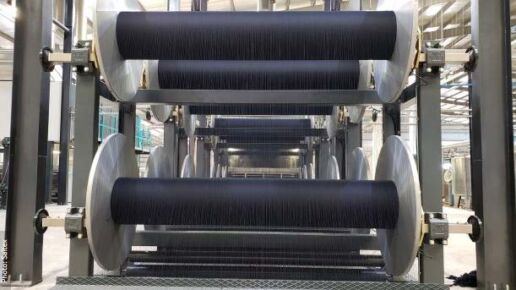
The new mill covers all operations from yarn spinning to weaving and to fabric dyeing and finishing. Saitex has announced it will produce 2 million meters of fabric per month, or 24 million yearly, and some 750 tonnes of yarn per month. These new operations have created 630 new jobs and the company says it will employ 1,000 at full capacity. As it has already done at its cut & sew factory, 20% of the jobs will be filled by people with disabilities.
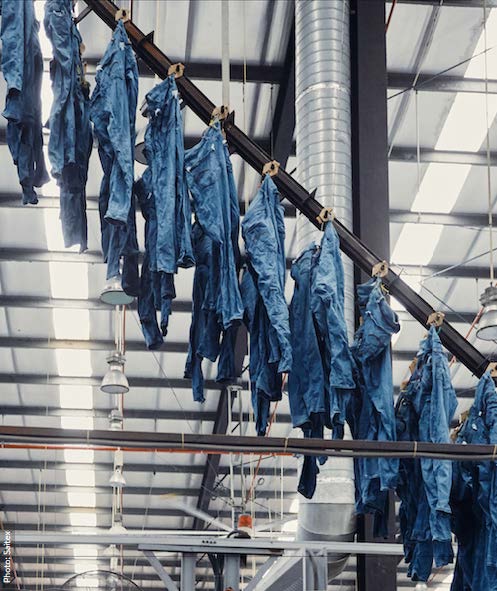
Like Saitex’s “Factory of the Future” in Los Angeles, CA, the new facility incorporates the latest and lowest impact technologies. The mill is equipped to produce yarns in pure cotton or in blends in dual-core, multiple-core and SiroSPUN technologies.
For indigo dyeing, Saitex has installed the Smart Indigo system that pre-reduces indigo via an electrochemical process. This, the company says, leads to lower CO2 emissions by 90%, requires 70% less energy and 30% less water, with oxygen as the only product released. Karl Mayer rope dyeing machines lead to further environmental savings, thanks to fewer dye bathes, and a 30% reduction in indigo and chemical usage.
Other eco-responsible features at the new site include LEED Gold Certified materials for the building, 15,000 solar panels, greywater recycling and rainwater collection systems. A vegetable garden covers 40% of the total site to feed workers and local communities. Saitex says it has also planted 6,000 trees in the industrial park, and has offset its carbon emissions by planting 50 hectares of mangroves in Vietnam, as part of its plan to contribute to climate neutrality by 2025.
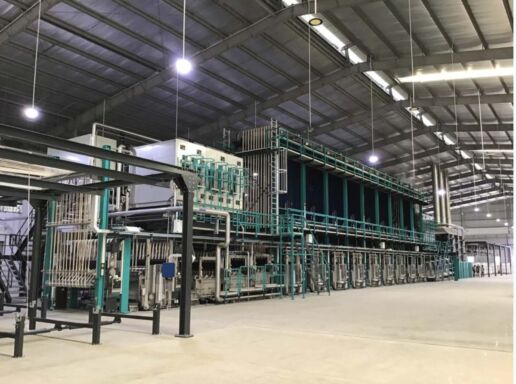

“It has been our long-term vision to close the loop on our operations. With the opening of the mill and the upcoming launch of our textile upcycling facility, Stelapop, our vision will be complete. We will close the circle, allowing us to provide unprecedented transparency in denim production and the ability to turn apparel and textile waste into high-quality goods. Our target is to become the most sustainable fabric mill on the planet making fully circular production possible for our customers.”
Sanjeev Bahl, CEO und Gründer von Saitex
This might be also interessting for you:
CO2 Tex – Sustainable innovations
1. February 2024
CO2Tex stands out as a central project within BIOTEXFUTURE, focusing on CO2-containing thermoplastic polyurethane (TPU) as an alternative to conventional elastane.
THE SOURCE 2024 – Spring.Summer 25 – Part I
30. January 2024
Some 30 selected clothing manufacturers present their products and services around the latest sourcing services and apparel manufacturing at THE SOURCE studio in hall 2.
MUNICH FABRIC START Januar 2024 – Closing Report
26. January 2024
The essence of the meeting of the European fashion industry: we are experiencing a return to our roots to meet the growing need for orientation – supported by a variety of exciting sustainable and AI-supported solutions that can pave the way to the future for the industry.
Trend Preview for SPRING.SUMMER 25
22. January 2024
Reduction and realism, coupled with imagination and creativity, create a new awareness of quality, sustainability and design expertise.
KEYHOUSE 2024 trends spring.summer25
20. January 2024
Auf über 1.000 Quadrat-metern finden Sie richtungsweisende Smart Textiles, Future Fabrics und neue Technologien – sei es in Punkto Nachhaltigkeit, Kreislaufwirtschaft, Digitalisierung, Traceability, Technologie oder Finishing für die Saison Autumn.Winter 24/25.
TIMELY TIMELESS
18. January 2024
Langlebigkeit steht hoch im Kurs. Und damit ist nicht nur eine solidere Qualität gemeint, sondern auch und vor allem ein zeitloseres Design.
Digitale Klarheit im Design – ASSYST
16. January 2024
Für das Thema Nachhaltigkeit sind normalerweise Einkauf und Produktion zuständig. Wer aber über den Einsatz von abbaubaren Stoffen hinausdenkt, kann Kosten, Materialverbrauch und Profitabilität deutlich beeinflussen. Neu daran: Der Schlüssel dazu liegt in der Hand der Kreativen.
ORTA x Long John
13. January 2024
Togetherthey developed the biggest sustainable jeans everproduced to set a new milestone within the denim industry.
GANNI – Fashion made from next-gen materials
9. January 2024
With all our communication we try to speak to our community in a meaningful and honest, not perfect way, showing the hard stuff, the stuff we didn’t get right, as much as we show the stuff we nailed.
Sustainable Innovations #6: Wearable muscles by MotorSkins
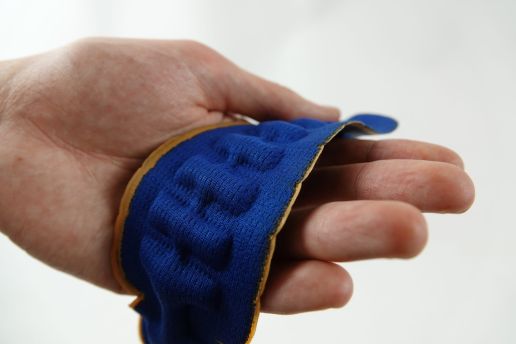
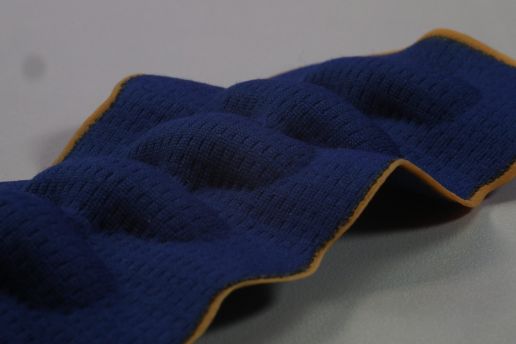
Innovative, intelligent, interactive: MotorSkins is a pioneering start-up in the field of shape-changing soft-robotic textiles. The Berlin-based company produces garments that help muscles move without any electronics such as batteries or motors – making them a pioneer in the industry. The first item produced is a compression garment for the legs.
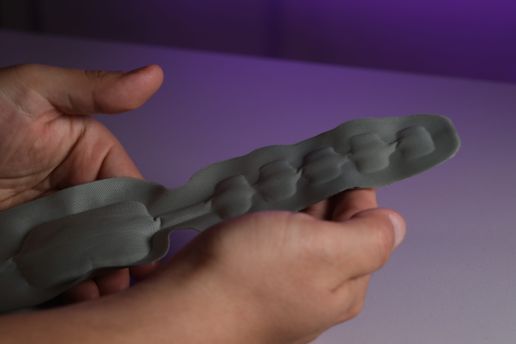
The special feature: the textiles are being stimulated by the movement of the users thanks to the new design and the innovative material. This creates a cycle: when the foot of the user compresses one part of the circuit against the floor (during a step), the pressure and volume are transferred to the active part, which powers it.
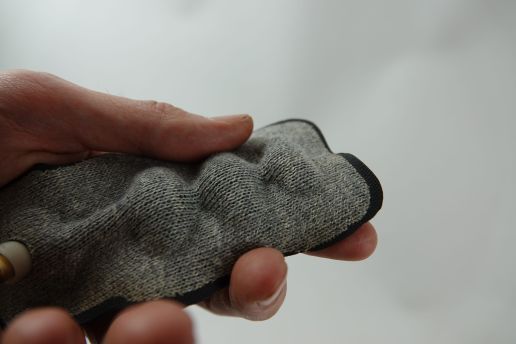
As an interface between sport, wellness and health, the start-up creates products that can be used medically, for relaxation or to support movement, depending on requirements. Currently, the young, international team at MotorSkins is working on textiles that are attached to the joints to make running easier – either for normal movements or also for illnesses. Inspired by nature, made for people.
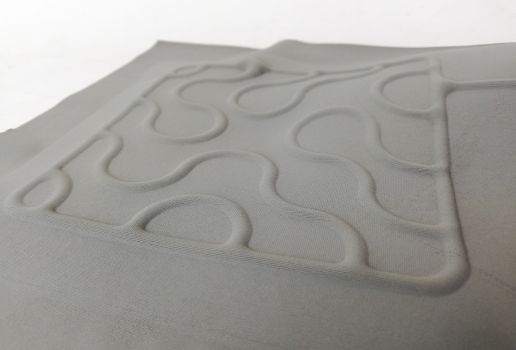
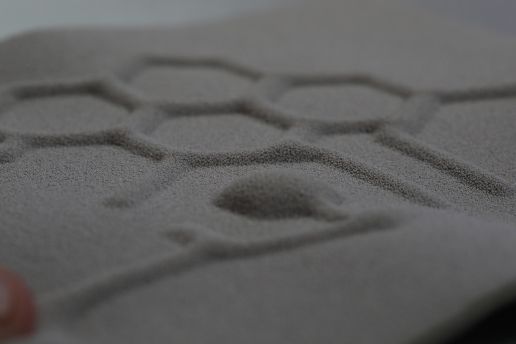
“MotorSkins technology bridges the functionality of soft-robotics with the versatility of textiles. We are a development platform for applications that explore human-machine interaction. Our technology creates a new paradigm of innovation in materials and sustainability where smart active elements are made without integrating electronics or batteries.”
– Juan Opitz-Silva
Follow on
For more information about SUSTAINABLE INNOVATIONS, see this interview with Simon Angel, curator of the Sustainable Innovations Forum, and the following articles:
“Pre-Action”: An interview with Simon Angel, curator of the Sustainable Innovations forum >>
“Biotic” by studio Lionne van Deursen >>
Flower matter by Irene Purasachit >>
Offcuts collection by Seok Park >>
Sunkolor by Panorama Fabrics >>
Sustainable Innovations #5: The Healing Imprint
Emotional healing through clothing – where science and textiles come together: The Healing Imprint explores the therapeutic potential of knitted garments. Bodysuits, gloves, socks and pillowcases are made to stimulate acupressure points on different parts of the body such as the hands, feet and head when moved. The custom-made textiles have grids through which small massage balls can be moved. By this, the acupressure points can be targeted.
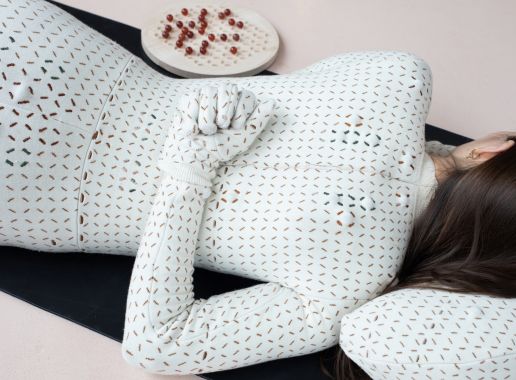
Laura Deschl is not only the designer of these special textiles, but also has a background as a yoga teacher – she used her knowledge to develop a yoga-based movement practice that uses one’s own body weight to increase pressure on certain points of the body. According to Deschl, trauma can also be worked through with this method. In combination with a trauma-sensitive yoga practice, the clothing thus becomes an individual tool that can release and dissolve even deeper emotions. The Healing Imprint shows how the fields of science, economics, medicine, psychology and textile production can be harmonised in an interdisciplinary way.
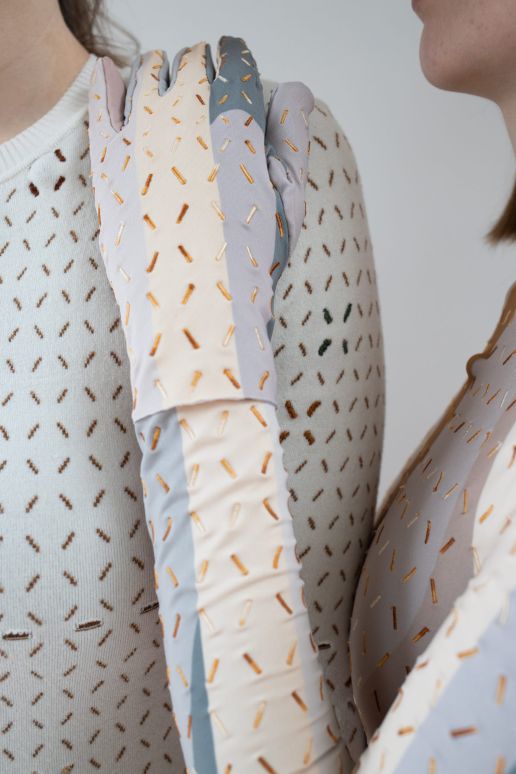
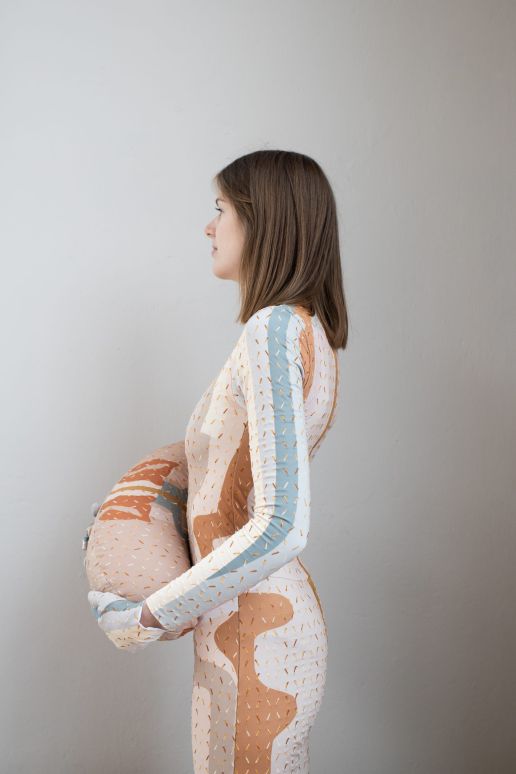
Allowing and feeling emotions: Mental illness and trauma are often still a rather invisible topic in society. One of Laura Deschl’s major concerns is therefore to draw attention to issues surrounding mental health and the traces of trauma on the body and to destigmatise them. Deschl wants to help patients train their body awareness and in this way bring them closer to their body again.
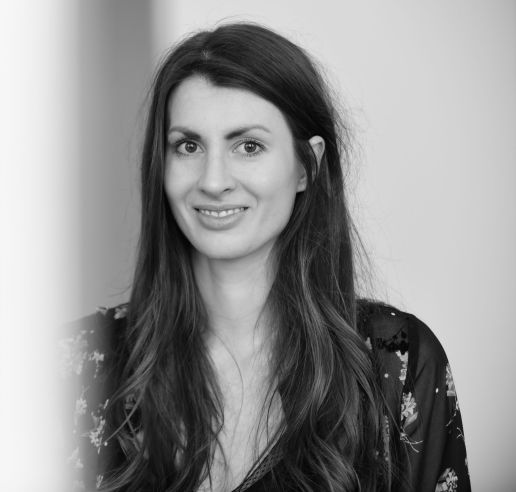
“With The Healing Imprint garments, the acupressure aims to help the wearer access buried memories or emotions, while the trauma-sensitive yoga practice facilitates introspection around those recollections. Considering that our society has an intense history of war, severe traumatisation and high exposure to everyday postwar stressors were common. These memories can get stored in the body’s memory and even be passed on over generations. Emotional wellbeing and healing is thus another angle to look at sustainability. A balanced body and mind are more likely enabling to make decisions that are in alignment with other humans and the planet.”
– Laura Deschl
Please find more info about SUSTAINABLE INNOVATIONS in this interview with Simon Angel, curator of the Sustainable Innovations Forum:
Interview about Pre-Creation, -Action and -Connection in our industry >>
Offcuts collection by Studio Popopo >>
Sunkolor by Panorama Fabrics >>
Sustainable Innovations #4: "Sunkolor" by Panorama Fabrics
With climate change still gathering momentum, the intensity of the sun’s invisible UV rays is also increasing. The problem: the intensity is not visible to the eye. The result: sunburn and damage to our skin that sometimes only appears years later which makes it all the more important to protect our important organ.
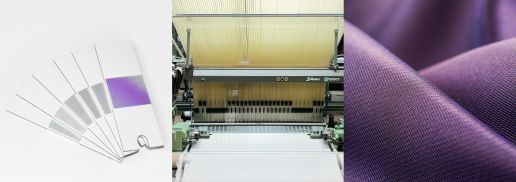
Exactly this is possible with Sunkolor. The material helps to visually perceive sun exposure and to establish a healthy relationship with it as a result. The technology Panorama Fabrics, the material driven Design Studio from Berlin, manages to make UV rays visible. For this purpose, Sunkolor yarns, which are produced in Germany, are woven into textiles.
When exposed to sunlight, the colour of the material changes thus indicating the dangerous UV index range. The change of colour makes it immediately clear once the situation becomes critical. In the first step, the yarns will be attached in labels to hiking backpacks. In the long term, a variety of different or outdoor garments will be made from this yarn.
The vision:
Create new tools to adapt in a changing environment caused by climate change.
Panorama Fabrics studio aims to contribute with its own products and pioneering designs to highlight the possible interaction between textiles, humans and our climate. Research is being carried out on innovations to make more people aware of the effects of climate change and at the same time support them in dealing with it. The two founders, Gabriela Kapfer and Karina Wirth, share a fascination for different materials and a passion for interdisciplinary collaboration, which enables them to create something new and progressive together.
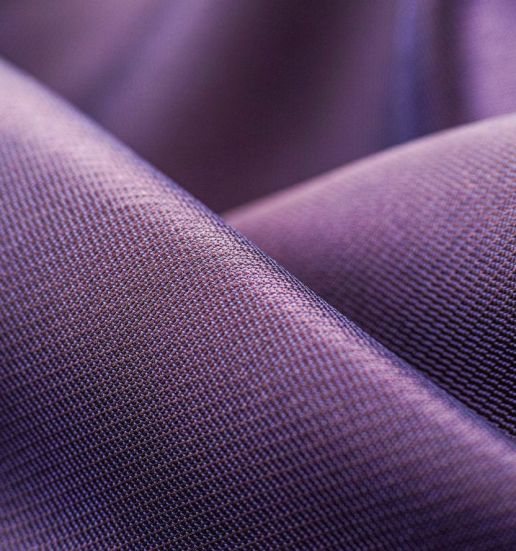
“Sunkolor makes the invisible visible to create awareness.”
– Gabriela Kapfer & Karina Wirth
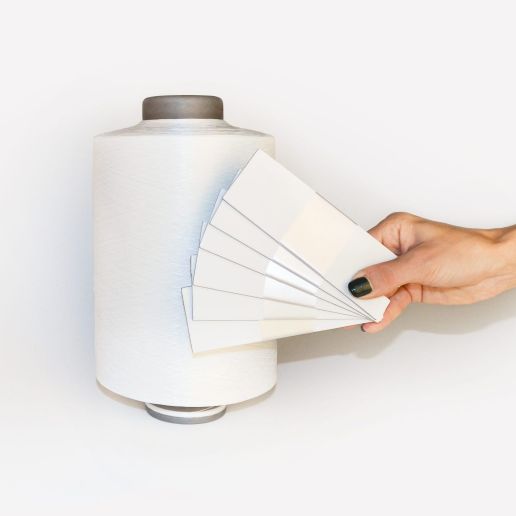
Please find more info about SUSTAINABLE INNOVATIONS in this interview with Simon Angel, curator of the Sustainable Innovations Forum and in the articles about further projects:
Interview about Pre-Creation, -Action and -Connection in our industry >>
Offcuts collection by Studio Popopo >>


